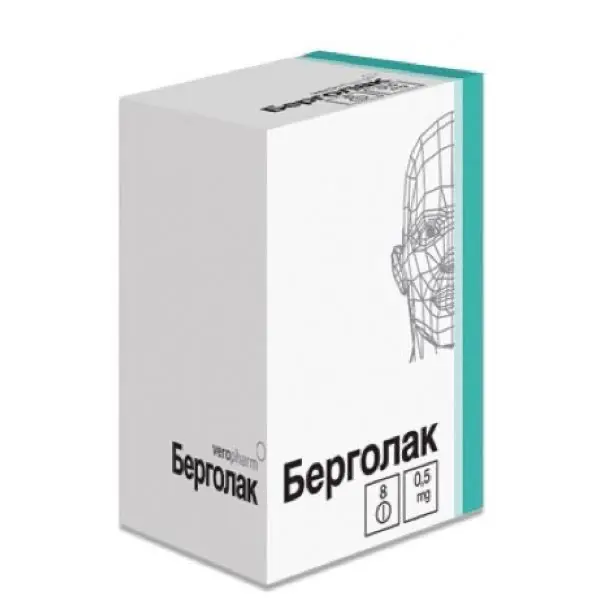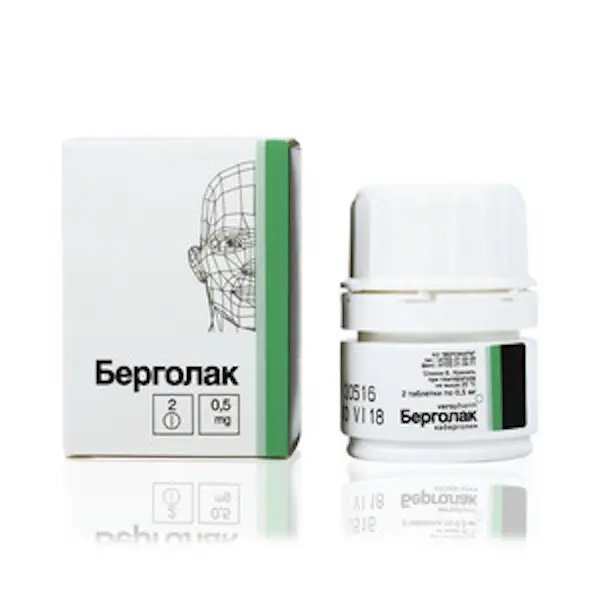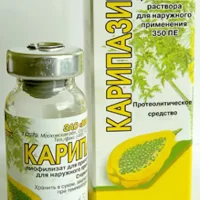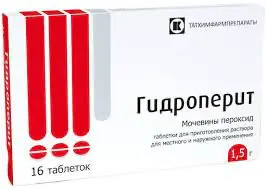Description
Bergolac Pharmacodynamics
Dopaminergic agent, ergoline derivative, reduces STH hypersecretion, suppresses prolactin secretion. Stimulates dopamine D2-receptors of lactotropic pituitary cells; in high doses it has a central dopaminergic effect. Normalizes blood prolactin content, restores menstrual cycle and fertility.
Due to a decrease in the concentration of prolactin in blood in women, pulsatile gonadotropin secretion and LH release in the middle of the cycle are restored, anovulatory cycles are eliminated, and the concentration of estrogen in the body is increased, the severity of hypoestrogenic (weight gain, fluid retention, osteoporosis) and hyperandrogenic (acne, hirsutism and other) symptoms is reduced.
In men it reduces the decreased libido, impotence (when the concentration of prolactin decreases, the concentration of testosterone increases), gynecomastia, lactorrhea caused by hyperprolactinemia. Macroadenomas of the pituitary gland and their associated symptoms (headache, impaired visual fields and acuity, cranial nerve functions and anterior pituitary lobe) are reversed. Reduces prolactin concentration in patients with prolactinoma and pseudoprolactinoma (in the latter – without reducing the size of pituitary adenoma).
It suppresses STH release by pituitary adenoma and reduces visual disturbances, neurological disorders and severe headaches, inhibits the progression of acromegaly. In 70-90% of patients it causes clinical improvement, but at the end of the course the STH content in the blood rises again. Stimulation of dopamine receptors restores neurochemical balance in the striatum and black matter of the brain, which contributes to alleviation of depressive symptoms, tremor and rigidity, acceleration of movements in all stages of Parkinson’s disease.
Decrease of prolactin concentration is noticed 3 hours after intake and is maintained during 7-28 days for patients with hyperprolactinemia and 14-21 days – for suppression of postpartum lactation. Normalization of prolactin concentration occurs within 2-4 weeks of treatment.
Indications
Postpartum lactation (prevention or suppression); treatment of disorders associated with hyperprolactinemia (amenorrhea, oligomenorrhea, anovulation, galactorrhea), prolactinsecreting pituitary adenomas (micro- and macroprolactinomas);
idiopathic hyperprolactinemia;
Empty saddle syndrome in combination with hyperprolactinemia.
Contraindications
Hypersensitivity (including to other ergot derivatives), lactation.
With caution. Severe CSS, Raynaud’s syndrome, severe hepatic insufficiency, peptic ulcer, gastrointestinal bleeding, severe psychotic and cognitive disorders (including in anamnesis), arterial hypertension during pregnancy (pre-eclampsia) and postpartum arterial hypertension, children (< 16 years old – safety and efficacy not established).
Dosage and administration
- Inside, with meals.
- For prevention of lactation after childbirth: 1 mg once (2 tablets), 1 day after childbirth.
- For suppression of established lactation: 0.25 mg (1/2 tablet) 2 every 12 hours for 2 days (total dose 1 mg).
- In order to reduce the risk of orthostatic hypotension in breastfeeding mothers, a single dose of Bergolac should not exceed 0.25 mg.
- For the treatment of hyperprolactinemia disorders: the recommended initial dose is 0.5 mg per week in 1 sitting (1 tablet) or in 2 sitting (1/2 tablet, e.g. on Monday and Thursday). The weekly dose should be increased gradually by 0.5 mg at monthly intervals until optimal therapeutic effect is achieved. The therapeutic dose is usually 1 mg per week, but may range from 0.25 to 2 mg per week.
- The maximum dose for patients with hyperprolactinemia should not exceed 4.5 mg per week.
- Depending on tolerance, the weekly dose of Bergolac may be taken once or divided into 2 or more doses per week. Dividing the weekly dose into several doses is recommended when prescribing a dose of more than 1 mg per week. The likelihood of side effects can be reduced by starting therapy with Bergolac at a low dose (e.g. 0.25 mg once a week) and then gradually increasing it until a therapeutic dose is reached. To improve the tolerability of the drug in case of pronounced side effects, a temporary decrease in the dose followed by a more gradual increase (e.g., an increase of 0.25 mg per week every 2 weeks) is possible.





